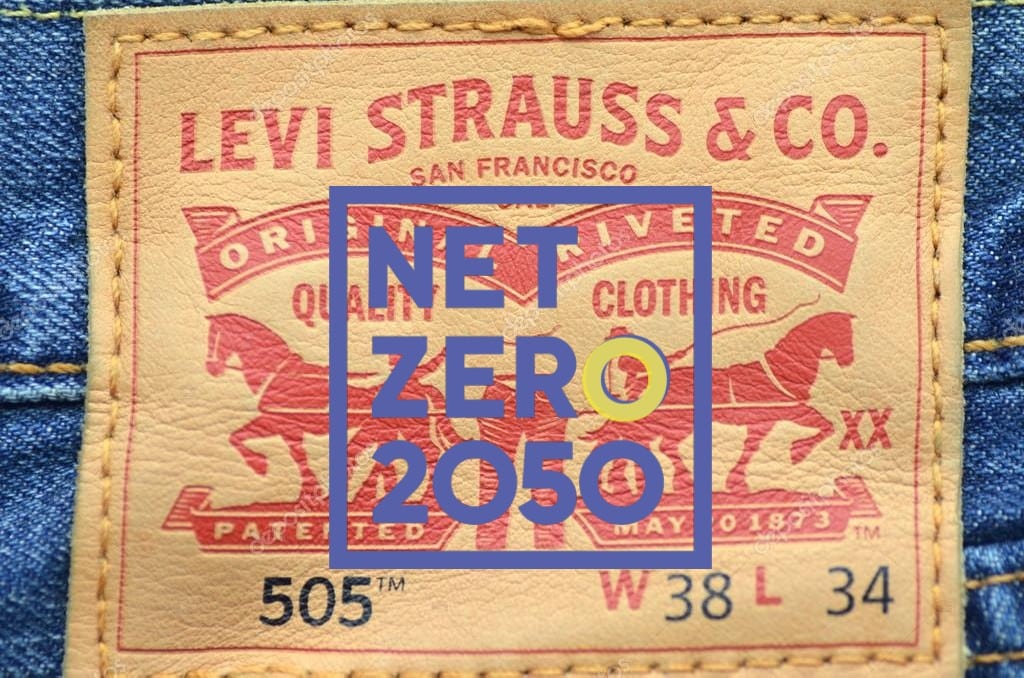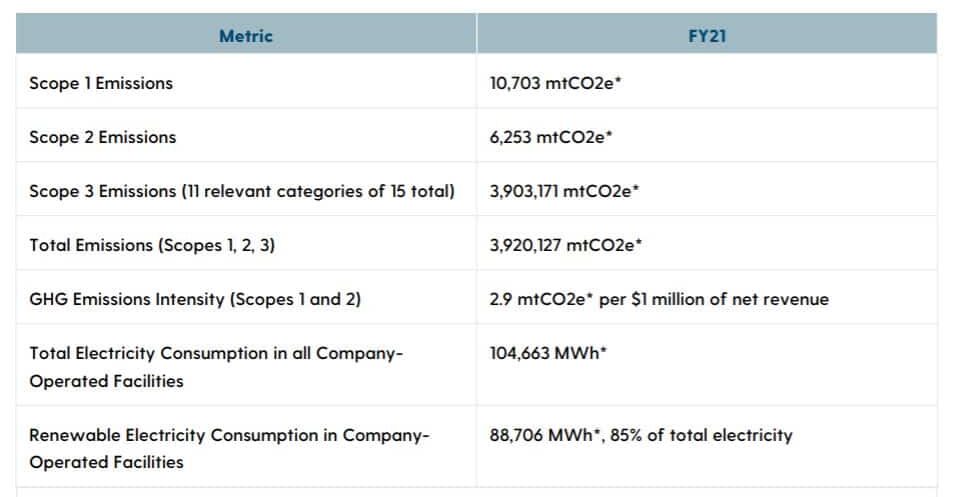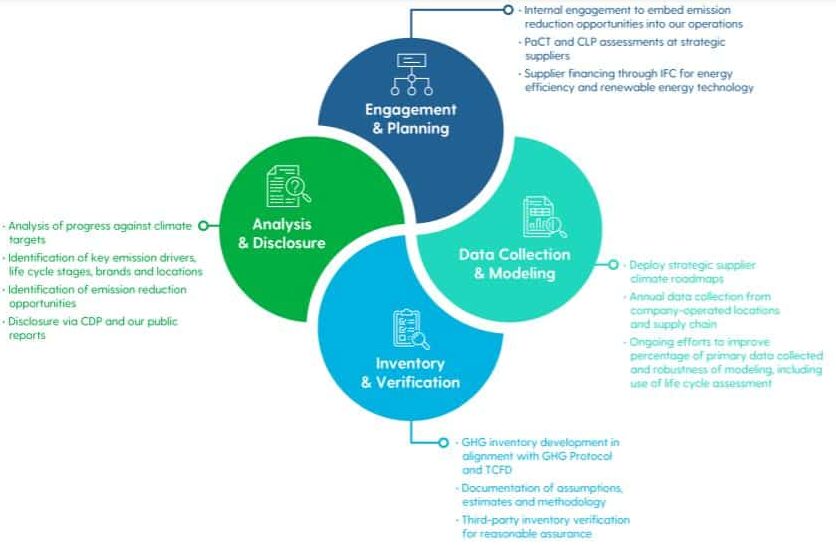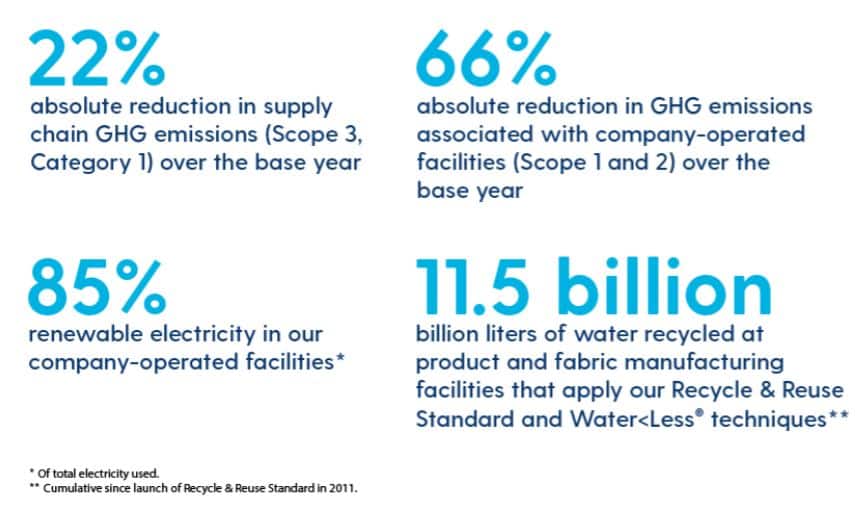Levi Strauss showed its commitment to achieve net zero emissions by 2050 under its new slate of sustainability goals detailed in its 2021 Sustainability report.
There are 16 sustainability goals that the giant apparel brand is focusing on under three major pillars – climate, consumption, and community.
They’re the major highlights of Levi’s recent sustainability report.
Commenting on the company’s goals, CEO and President Chip Bergh said that:
“These goals are crucial to the future of our business… By doubling down on sustainability and ESG reporting at Levi Strauss & Co., we are committed to being transparent about our progress on ESG matters and working to address the most pressing challenges of our time…”
A big part of Levi’s goals is to reduce its greenhouse gas emissions and achieve net zero by 2050.
Levi’s Net Zero Goal by 2050
In tackling climate change, the company pledges to face it head-on. Levi’s stated in its report that:
“Reducing our climate footprint across our value chain and galvanizing others for collective action are top priorities… This includes reducing energy use and emissions as well as innovating to reduce freshwater use in our own operations and our supply chain — while striving to protect and restore biodiversity…”
As of 2021, the apparel firm has the following footprint:
The company seeks to reach its net zero ambition by reducing absolute emissions in all its facilities through these levers:
- energy reductions,
- efficiency,
- onsite renewable energy, and
- energy attribute credits.
Its operated facilities include 1,083 retail stores in 37 countries and about 80 offices.
To cut down emissions, the company takes on these climate action strategies.
Such climate action targets are absolute rather than compared to net revenues, size or other economic metrics.
Levi’s Climate Goals
Levi’s also detailed its other sustainability goals apart from net zero emissions under the climate pillar. These particularly include the following climate goals against their 2016 baseline:
- 40% absolute reduction in supply chain (Scope 3) emissions by 2025
- 90% absolute reduction in GHG emissions associated with all company-operated facilities by 2025
- 100% renewable electricity in all company-operated facilities by 2025
- Reduce freshwater use in manufacturing by 50% in areas of high water stress by 2025 against the 2018 baseline
- Continue to assess and identify material impacts and dependencies on nature across the value chain to implement a comprehensive biodiversity action strategy by 2025
Levi’s plans to submit those goals to SBTi and get its approval in 2023.
2021 Climate Highlights
As of 2021, the San Francisco-based firm was able to achieve 85% renewable electricity use at its company-operated facilities. This is on track to its path towards 100% by 2025.
Electricity makes up 68% of the total Levi’s company-operated energy footprint. So reaching its goal of 100% renewable electricity will significantly reduce the firm’s total emissions.
Here are the other key progress that the firm has accomplished under its near-term climate goals.
In addition, as a crucial part of its energy efficiency measure, Levi’s managed to have the following achievements.
- Used a solar power array to meet 20% of electrical demand at its Leadership in Energy and Environmental Design (LEED) Platinum-certified distribution center in Nevada.
- Development of a new distribution center in Germany with Platinum-level LEED design and Platinum-level WELL certification following the circular design principles.
- Incorporated LEED principles for energy, waste management, indoor air quality and water use.
The company was also able to make progress in reducing its absolute emissions through various means.
- Shipped products using biofuels with net zero carbon emissions (Maersk ECO Delivery)
- Worked with key suppliers in creating roadmaps detailing climate and water targets and identify solutions
- Encouraged supplier participation in company programs that promote low carbon solutions
One theme that cuts across all Levi’s sustainability goals is the need for increased partnership across sectors to fight climate change.
In fact, the company is aligning with other brands to work with manufacturing partners and other organizations on climate solutions, be it directly cutting emissions or resorting to carbon offsets.
And so over the past months, Levi’s has been collaborating with partners like Fashion for Good, the Ellen MacArthur Foundation, and Organic Cotton Accelerator to help bring the apparel industry toward more sustainable, circular production.





